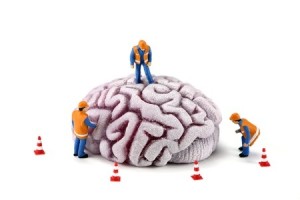Pathologizing Grief
In January of 2015, an article on “Complicated Grief” was posted in The New England Medical Journal blog. The author described complicated grief as “intense grief after the death of a loved one that lasts longer than expected according to social norms and causes functional impairment.” While it was said that psychotherapy is a first-line treatment, the author reported that antidepressant medication is commonly used. This is just the latest stage in a rather complicated refashioning of grief from a normal human experience into a mental disorder.
The symptoms of complicated grief were said to be: “persistent, intense yearning, longing, and sadness.” Along with these “symptoms” can be a sense of disbelief or failure to accept the reality of the person’s death. Persistent thoughts or images of the deceased can occur. Ruminating on the circumstances of the death, with feelings of anger or guilt was said to be common. Avoiding situations that remind the person of the loss is common. Holding on to the deceased by repeated reminiscing, viewing, touching or smelling the deceased person’s belongings can occur as well.
People with complicated grief often feel shocked, stunned, or emotionally numb, and they may become estranged from others because of the belief that happiness is inextricably tied to the person who died. They may have a diminished sense of self or discomfort with a changed social role and are often confused by their seemingly endless grief.
Complicated grief is not a psychiatric diagnosis, although you wouldn’t know that from reading the above description. It explicitly uses diagnostic-like language in its discussion in an attempt to gain legitimacy for “Prolonged Grief Disorder” to be included in the International Classification of Diseases, 11th edition, due for release in 2017. The boat has passed on inclusion in the DSM, which went through its own controversy over grief when the DSM-5 removed the bereavement exclusion (BE) from the existing Major Depression Disorder (MDD) in 2013.
Within the DSM, the bereavement exclusion meant that a diagnosis of MDD could not be made if the loss of a loved one was a better explanation for the observed symptoms of depression. However, the time frame to avoid the grieving process from qualifying as MDD has been progressively shrinking. Within the DSM-III, the BE was one year; within the 4th edition, it was two months. Now in the DSM-5, bereavement is no longer an excuse. If you meet the diagnostic criteria for MDD over a two-week time period, you are just as depressed as anyone else, according to the DSM.
Joanne Cacciatore, who has specialized in the psychotherapeutic treatment of grief and bereavement for almost twenty years, has been an outspoken critic of these changing guidelines and pseudo-diagnoses. In March of 2012 she wrote an essay opposing the proposed elimination of the BE from the DSM-5. Her eloquent essay reached 100,000 readers in two weeks. She stated her opposition to both of the above ‘time limits’ for grief, and pointed to the historical movement of the DSM to medicalize normal human emotion. She said:
We should not, ethically or morally, medicalize grief. To do so is to medicalize love. We rarely mourn for that which we do not love. I can only begin to imagine what the sages, and mystics, and shamans of the past might think of a society which does so.
Allen Frances was also openly critical of the DSM-5 and its changes with regard to bereavement. In his own blog on the Huffington Post in March of 2012, he published Dr. Cacciatore’s open letter to the Board of Trustees of the American Psychiatric Association. She pointed to the arbitrariness of the two-week time frame, stating that it not only contradicts common sense, but rests on weak scientific evidence. To her knowledge there was no empirical evidence to support it.
One thing in which the literature is clear: long-term psychological distress is common in this population and other populations suffering traumatic deaths. In my experience both as a researcher and clinician in the field and also as a bereaved parent, the DSM-5 proposal is radical, unnecessary, challenges what it means to be human, and for some may be dangerous.
But the APA was not moved. Frances tried again in January of 2013, as the DSM-5 was preparing to go to press at the end of the month. He said: “The American Psychiatric Association has just four more weeks to reverse this dreadful mistake that flies in the face of clinical common sense and is unsupported by the limited available science.” He put together his own top ten list of harmful changes in the DSM-5, and medicalizing grief was number two. In case you aren’t aware, Dr. Frances’ credibility in voicing these concerns come from his long career as a psychiatrist and as the person selected by the APA to chair the DSM-IV. He said:
After 40 years and lots of clinical experience, I can’t distinguish at two weeks between the symptoms of normal grief and the symptoms of mild depression — and I challenge anyone else to do so. This is an inherently unreliable distinction. And I know damn well that primary care doctors can’t do it in a 7-minute visit. This should have been the most crucial point in DSM-5 decision-making because primary care docs prescribe 80 percent of all antidepressants and will be most likely to misuse the DSM-5 in mislabeling grievers.
Returning now to the essay “Complicated Grief,” let’s look at Dr. Cacciatore’s response. She commented how the bereaved were again at risk of being diagnosed and “treated” for “absolutely normal feelings and experiences” after a painful and traumatic loss. Responding to the above description of complicated grief, she said:
Ha! Social norms? Around grief? Talk about pathology! Western culture’s “social norms” and expectations around grief, especially when traumatic, are as abnormal and avoidant as any society could get. The average bereavement leave is three days, many bereaved parents are medicated within days or weeks after a traumatic loss (even in the presence of data to suggest these medications can be harmful and iatrogenic), and mourners are expected, and then pressured, to get back to ‘life-as-usual’ often within weeks or mere months, even after traumatic death. And our social networks often fail as others’ tolerance wanes in the months and years that follow.
Perhaps there is better guidance for conceiving a time frame for grief and bereavement in the book of Ecclesiastes (3:1-8) than in the DSM. There the Preacher said there is a season and a time for everything under heaven. Notice that he doesn’t try and quantify “season” or “time.” A time to be born and a time to die; a time to weep and a time to laugh; a time to mourn and a time to dance; a time to keep silent and a time to speak. When weeping turns to laughing, when mourning is replaced by dancing, then the season of grief has run its course. However, when individuals attempt to pathologize human emotion by blurring the line between grief and psychiatric disorder, it is a good thing that people like Joanne Cacciatore and Allen Frances choose to speak up and not remain silent.





